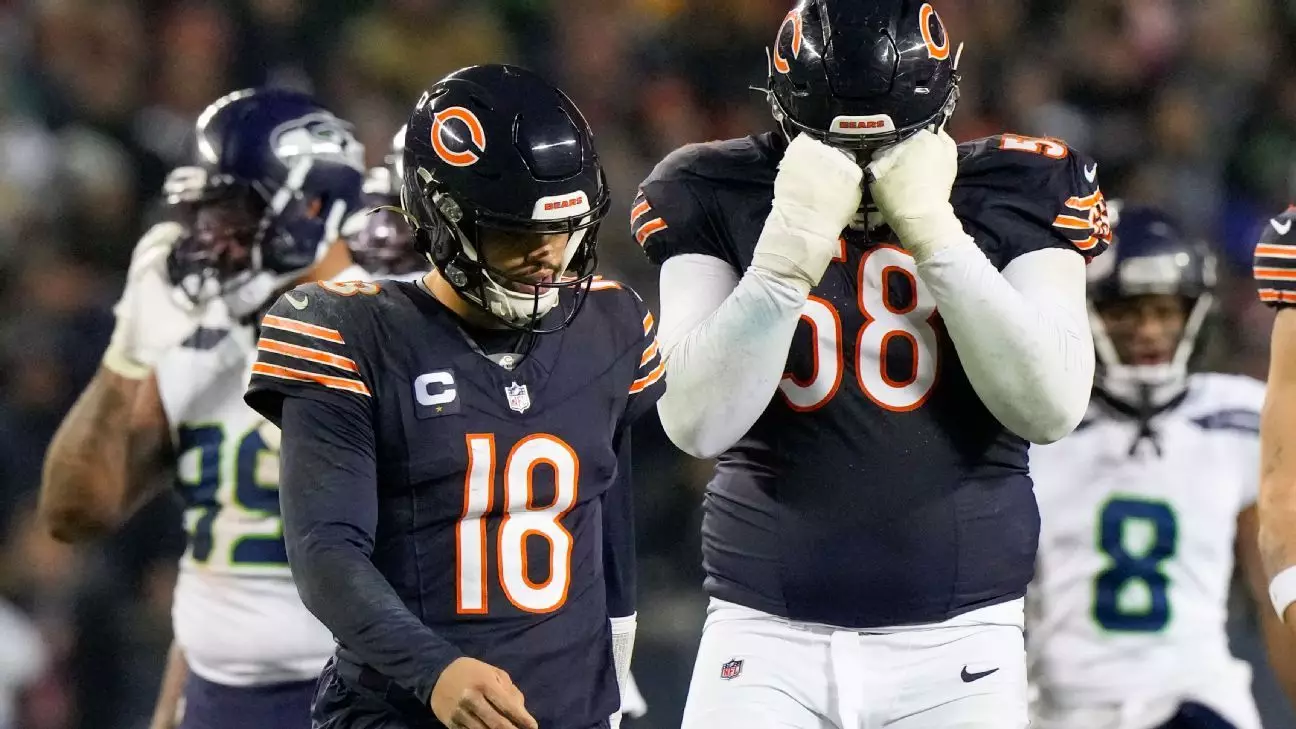The Chicago Bears fell to the Seattle Seahawks in a game that epitomized their ongoing struggles this NFL season. The match, which ended with a scant score of 6-3, marked the Bears’ tenth consecutive loss, raising alarm bells within the organization. Apart from merely adding another tally to the loss column, this game also underscored profound issues relating to game management and execution, mirroring the disarray seen in previous weeks. In this analysis, we will delve into the factors contributing to the Bears’ dismal performance, with an eye on the clock-management breakdown that ultimately shaped the outcome of the game.
With only 179 offensive yards recorded, the Bears continued to struggle in generating an effective offense. This was not an isolated incident but rather a continuation of a disjointed season characterized by an inability to find any rhythm offensively. The team’s weakness was glaringly evident, as they managed less than 200 yards in a game that should have been a stepping stone to rebuilding towards a more competitive team. The level of output is alarming for any team, particularly one that aims to find stability as the season progresses.
As the Bears trod into the final quarter, trailing by a slim three-point margin, fans may have held onto a glimmer of hope. However, the team’s inability to capitalize on opportunities presented in the fourth quarter — specifically with three timeouts remaining — led to yet another squandered chance. The Bears’ offensive playcalling seemed erratic and uninspired, offering little creativity or strategic ingenuity that could turn the tide. The down-and-distance situation repeatedly left the players and coaches making hurried, seemingly reactionary decisions rather than employing a cohesive game plan.
Clock Management Catastrophes
One of the most significant sources of frustration in the game was undoubtedly the clock-management issues that plagued the Bears, echoing similar struggles seen in their loss to the Detroit Lions. In critical moments, such as entering the final drive of the game with over five minutes remaining, Chicago failed to utilize their timeouts wisely. The situation reached a critical point when, after only six plays, left guard Jake Curhan’s false start prompted interim head coach Thomas Brown to make a pivotal decision regarding the use of their first timeout.
Brown’s defense for the timeout — suggesting that he wanted to approach the sequence with aggressiveness — hardly alleviated the severity of the miscalculation. The sequence also raises questions about communication within the coaching staff, especially given that prior plans were disrupted by an immediate change in strategy. This scenario highlights a fundamental lack of alignment on game tactics, stirring frustrations among the team members, including quarterback Caleb Williams and player DJ Moore.
In the closing minutes of play, Williams appeared overwhelmed and unable to communicate effectively with the sideline, a revelation that showcased the disarray on the Bears’ side. The time wasted during their final drives can only be viewed as a byproduct of poor preparation, insufficient situational awareness, and inadequate command from the coaching staff.
The aftermath of the game led many players to articulate feelings of chaos and confusion on the sideline. This suggests deeper-rooted systemic issues that extend beyond this single match. The insistence by players that they did not fully comprehend the offensive strategy conveys an unsettling sense of disengagement. At an intrinsic level, this impacts morale and dismantles the unity necessary for a team to thrive, especially in moments of high-pressure play.
For instance, DJ Moore’s comments about their ineffective response during critical moments reveal significant fractures in team cohesion and clarity. The question arises — in what ways can the Bears recalibrate their focus? Coaches must ensure that players feel supported with clear directives while simultaneously allowing room for rapid adjustments in-game. The Bears must develop a culture that communicates effectively, preparing them for the rapid pace and unexpected outcomes common in NFL games.
As the Bears exit this disappointing season, the loss against Seattle serves as a crucial learning point for both players and coaching staff. It’s apparent that drastic improvements are needed in offensive execution, clock management, and overall team cohesion if the Bears hope to turn around their fortunes. Continued failures in these areas could potentially endanger the team’s long-term goals and vision.
Moving forward, Chicago must critically assess their team dynamics and coaching strategies to end this ongoing losing streak. By creating a conducive environment that prioritizes streamlined communication, effective execution, and accountability, the Bears have the potential to redefine their narrative in the upcoming seasons. However, time will reveal whether these changes will be actualized or if they will remain trapped in a cycle of confusion and missed opportunities.

